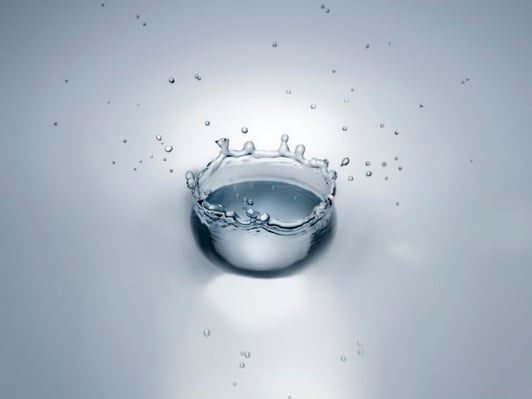
The terms ‘deionisation’ and ‘demineralisation’ are often used interchangeably, even by those in the industry. But are there any real differences in DI water vs. demineralised water? Yes, and each process can make a difference to what you may be manufacturing.
How Deionisation Works
The purpose of the deionisation process is to remove impurities in water at the ion level. Deionised water is useful for manufacturing water where chemical composition must remain consistent. We recently published an article on deionisation - RO Water Vs DI Water – Which Is Best For A Food/Drink Manufacturer?
Pure water is achieved by first passing water through a resin that attracts the cations in water. The positively-charged ions in the water are attracted to a negatively-charged resin as the water travels past. After having been in contact with the cation resin, water then passes through an anion resin, where its positive charge attracts the negatively charged anions in the water.
Deionisation equipment can consist of separate cation and anion chambers, or a mixed-bed format. The mixed-bed format sees resins being mixed and contained in one vessel as opposed to two. The resins are agitated with compressed air.
Once the process is complete, the product is water that is free of metallic and mineral impurities. Deionisation can remove salts and minerals from water, but is not effective at removing of viruses or bacteria, unless strong, specialist resins are used. Various quality levels of water can be achieved via treatment with deionisation, making it suitable for a range of industries.
In order for the process to continue producing the same level of water purity, the resins require regeneration. In most systems, resins are regenerated with a caustic soda (NaOH) solution at regular intervals.
How Demineralisation Works
Demineralised water can be obtained using the same process used to get deionised water. However, demineralised water is also achievable via other filtration processes. The purpose of demineralisation is to remove all naturally-occurring minerals in water – free-floating compounds that make water ‘hard’. Demineralisation removes magnesium and calcium ions, resulting in water that is ‘soft’.
What Demineralisation Removes
Demineralisation can also remove calcium, chloride, bicarbonate, sulphate, nitrate and potassium from water. However, this process will not remove organic compounds. Organics can be removed with charcoal filters, which trap the compounds as the water flows through.
Demineralising water using the ion exchange process will also require positively and negatively charged resin beds. These should be regenerated using the same methods and chemicals employed in deionisation.
This process can be useful in situations where water-based manufacturing compounds are likely to clash with any minerals present in the feed water. The most common example is the cosmetics industry, where several chemicals may be used in the production process.
Resins
Both deionisation and demineralisation make use of four types of resin: strong acid cation, weak acid cation, base cation and base anion.
1) Strong Acid Cation Resins
Strong acid cation resins (SAC) are commonly used in their hydrogen form. SAC resins remove any cations in the water, which adhere more to the resin than to the regenerate ion.
2) Weak Acid Cation Resins
Weak acid cation resins (WAC) remove only alkaline cations. WAC resins are most commonly used to remove the calcium compounds associated with carbonate alkalinity.
3) Strong Base Cation Resins
Strong base cation resins (SBA) exist in Type I and Type II varieties. Type I SBA resins are used when low silica leakage levels are important, and are also used in locations where source water temperature is relatively high for the better part of the year. Type II SBA resins exchange ions with a resin that’s chemically weaker than their Type I counterparts, and are used in locations where cooler source water temperatures dominate through the year.
Type I SBA resins are most efficient when a warm caustic soda solution at a temperature of 49°C is used for regeneration. Type II SBA resins are best regenerated at lower temperatures of around 35°C.
4) Weak Base Anion Resins
Weak base anion resins (WBA) remove only the anions in strong mineral acids like nitrate, chloride and sulphate. In order to ensure that both carbon and bicarbonate are removed, water must pass through an SBA resin bed after treatment with the WBA resin.
Choosing The Right System For Your Needs
Now that you know the differences between deionisation and demineralisation, you need to make the right decision about your treatment system. You can get more information about the best system for you by downloading our free Guide to Industrial Water Purification Systems. This guide, created by our team of experts at Wychwood Water, contains all you need to know about the best ways to purify your facility’s water. You can also call us on 01993 892211 for more information, or email us on sales@wychwood-water.com.











 We are a specialist independent company involved in water purification and water treatment technologies
We are a specialist independent company involved in water purification and water treatment technologies


